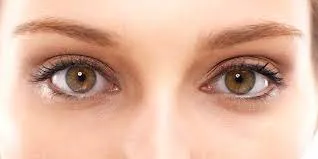
Eye infections can affect any part of the eye including the inner or outer eyelid or the eyeball. Eye infections can be caused by bacterial, viral, or fungal infections, and any foreign body getting into the eye can cause severe irritation. Very often, people who wear contact lenses are more prone to eye infections. Common symptoms of an eye infection are redness around your eyelids, discharge, itchy or scratchy eyes, watery eyes, and swelling around your eyes.
The eye is a very complex and sensitive organ, therefore, if you get any signs of a serious infection in your eye, you should see an eye doctor. Not getting prompt treatment for an eye infection can lead to permanent eye damage and possible vision loss.
There are many home remedies for eye infections that can be used for mild infections or to complement conventional treatment for severe eye infections. For example, a warm compress with chamomile can help to reduce eye swelling and is effective against pink eye. Even a simple saline eye wash can help to reduce eye infections, soothe irritation, and speed up healing time.
Before we look at the best home remedies for treating an infected eye, it’s important to know a little more about the different kinds of eye infections.
Different Types of Eye Infections
Eye infections can affect one or both eyes at the same time. Depending on the cause of the eye infection, you may have one of these eye infections:
Conjunctivitis or pink eye. This is a common viral or bacterial eye infection that affects the inside of the eyelid or outer layer of the eye. According to Medlineplus, pink eye causes itching, inflammation, discharge, and redness and can be very contagious.1
Eye stye (sty). An eye stye is another common type of eye infection. An eye stye causes a red bump to appear on your eyelid. The stye appears because of bacteria blocking an oil gland in your eyelid. The bump can fill with pus and become red and swollen. The Mayo Clinic says that a stye should go away on its own within a few days.2
Keratitis. A bacterial infection in your eye which can cause pain, vision problems, and watery eyes. According to the American Academy of Ophthalmology, keratitis can also cause discharge and requires prompt medical treatment.3
Shingles. Shingles can affect your eye as well as making your skin and nerves sensitive to touch. The American Academy of Family Physicians (AAFP) says that the herpes zoster virus can infect the skin around the eye and even the eye itself. This will cause your eye to become very painful, inflamed, and cause redness on your eyelid. If you have shingles around your eye, you should see a doctor immediately.4
epharitis. Blepharitis causes your eyelids to become inflamed and it also causes the skin around the eye to become dry. Dr. Brian S. Boxer Wachler from WebMD says that your eyes will probably feel itchy and look swollen. Some home remedies are effective in treating blepharitis infections.5
Orbital cellulitis. A bacterial infection in the tissue around your eyes can cause orbital cellulitis. Ophthalmologist, Dr. Franklin W. Lusby says that the upper and lower eyelid become swollen and inflamed and are often accompanied with a fever, pain when moving the eye, and decreased vision.6 If left untreated, it can lead to blindness, therefore, prompt medical attention for this type of eye infection is essential.
Dacryocystitis. Dacryocystitis is an infection of the tear sac when it becomes blocked. According to Dr. James Garrity from the Mayo Clinic, the eye infection can inflame the area at the corner of your eye near to your nose. This will probably be painful and you may have discharge from the corner of your eye.7
Herpes virus. The same herpes virus that causes cold sores can also cause eye infections. Very often the infection is spread to the eye after touching a cold sore on your face. Dr. Daniel Porter from the American Academy of Ophthalmology says that the herpes simplex virus (HSV) infection in the eye can cause pain, redness, problems with your vision, discharge, and sensitivity to light.8
Common Symptoms of Eye Infections
A viral, bacterial, or fungal infection in or around your eye will cause a number of symptoms ranging from mild to severe. Mild eye infections can be treated effectively using home remedies to reduce inflammation and help the eye heal properly.
According to Dr. Kathleen Romito from WebMD, some symptoms of eye infections that can be treated at home are:9
- A feeling of something in your eye.
- Redness around your eye or eyelids.
- A small amount of discharge.
- Watery eyes.
However, if you have other symptoms like pain in your eyes, increased sensitivity to light, fever, impaired vision, and discharge, you should always have your eye evaluated by a doctor.
Common Causes of Eye Infections
There are a number of reasons why eyes become infected and cause redness, swelling, and discharge. For example, irritation from a minor injury (like a scratch) or a chemical getting into your eye can result in germs causing an eye infection.
The American Academy of Ophthalmology says that people who wear contact lenses are more prone to having eye infections.10
Also, touching your eyes with unclean hands can spread germs and viruses to your eyes that can cause infections on your eyelids, eyeball, and tear sacs.
Home Remedies for Eye Infections
Effective treatment for infections in and around the eye require getting rid of the infection-causing germs and soothing any inflammation. It’s also important to always wash your hands before applying any remedy to your eye. This will help to prevent spreading any more infection to your eye.
Warm compress
A warm compress can treat an eye infection like an eye stye or conjunctivitis and help clear the infection quicker. The warmth from the compress helps to increase blood flow to the infected eye which may speed up the healing process.
Doctors from the Mayo Clinic recommend using a warm compress to treat pink eye infections. This can also be useful to soothe the symptoms of allergic conjunctivitis.11
How to use:
To help get rid of an eye infection using a warm compress, this is what you should do:
- Soak a clean, lint-free cloth in warm water and wring out the excess.
- Keep your eyes closed and apply the warm compress to the infected eye several times a day.
- Repeat until signs of your eye infection have gone completely.
If you have conjunctivitis in both eyes, you should use different clean cloths for each eye. This is to prevent spreading infection from one eye to the other.
If your eye is inflamed, you can also try a soothing cool compress for instant relief from itchy, scratchy eyes.
Tea bags
Tea bags are a great way to help treat an eye infection at home. Old tea bags for eye infections make great compresses and tea contain soothing properties to help reduce inflammation and irritation caused by eye infections. Tea bags can also help to drain pus from eye styes and prevent the infection getting worse.
For example, the journal Archives of Dermatology published a study into the therapeutic effects of green tea. The researchers found that green tea contains antioxidant and anti-inflammatory properties than can help treat various skin disorders.



































